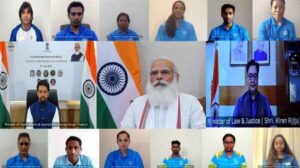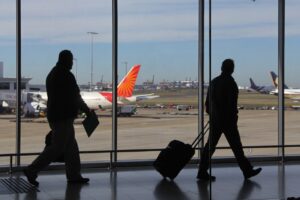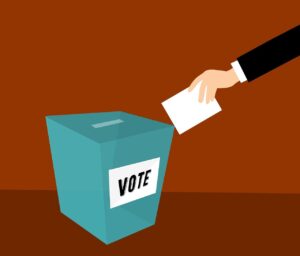Till last year, India was a ‘free’ country, but now it has remained only ‘partly free’, claims the US-based Freedom House in its latest report. With the status, predictably, India’s score on political rights and civil liberties has gone down from 71 in 2020 to 67 in 2021. In fact, the ranking has been on the slide since 2018, the score was 77 in 2018 and 75 in 2019.
In its latest report, Freedom House has assessed the level of political rights and civil liberties in India as 30/40 and 33/60 respectively.

Now the moot question is what changed in India in the last year to make it ‘partly free’ from a ‘free country? In a nutshell, the Freedom House report explains that the status changed “due to a multiyear pattern in which the Hindu nationalist government and its allies have presided over rising violence and discriminatory policies affecting the Muslim population and pursued a crackdown on expressions of dissent by the media, academics, civil society groups, and protesters.”
In an ‘overview’ of the report, it claims that “the constitution guarantees civil liberties including freedom of expression and freedom of religion, but harassment of journalists, nongovernmental organizations (NGOs), and other government critics has increased significantly under Modi. Muslims, scheduled castes (Dalits), and scheduled tribes (Adivasis) remain economically and socially marginalized.”
What all happened in India in 2020:
Freedom House report further elaborates the key developments in India that led it to declare the country ‘partly free’.
Delhi Violence:
According to the report, “in February 2020, more than 50 people, mostly Muslims, were killed amid communal and protest-related violence in Delhi that followed weeks of demonstrations against discriminatory changes to the country’s citizenship law.”
Sedition Law:
The report claims, “The authorities filed criminal charges against journalists, students, and private citizens under colonial-era sedition laws as well as the 2000 Information Technology (IT) Act in response to speech perceived as critical of the government, notably including expressions of opposition to the new citizenship legislation and discussion of the official response to the COVID-19 pandemic.”
Migration During Lockdown:
The Freedom House reports claims, “India’s internal migrant population endured significant hardships as a result of the government’s pandemic-related lockdown, which was imposed in March and gradually eased beginning in May. Many migrant laborers were unable to access basic supplies and services in cities, forcing millions to travel hundreds of miles—often on foot—to their home villages. Harsh restrictions on movement were violently enforced by the police and citizen vigilantes, with Muslims often scapegoated as potential spreaders of the virus.”
Ram Temple:
The report further cites, “In September, several BJP leaders who were credibly accused of orchestrating the demolition of a historic mosque in 1992 were acquitted by a special court. Modi, the previous month, had signaled his support for the construction of a Hindu temple on the contested site.”
The other highlights of the Freedom House report:
– The political rights of India’s Muslims continue to be threatened in India.
– Attacks on the freedom of the press have escalated dramatically under the Modi government.
– Authorities have used security, defamation, sedition, and hate speech laws, as well as contempt-of-court charges, to quieten critical voices in the media.
– A number of Hindu nationalist organizations and some media outlets promote anti-Muslim views, a practice that the government of Prime Minister Modi has been accused of encouraging.
– The public generally has some access to information about government activity, but the legal framework meant to ensure transparency has been eroded in recent years.
– Academic freedom has significantly weakened in recent years, as intimidation of professors, students, and institutions over political and religious issues has increased.
India back to ‘partly free’ status after 1991
India has been in the ‘partly free’ category of the Freedom House annual report in the past as well. First, for the two years in 1976 and 77, around the Emergency era, and then for the seven years from 1992 to 1998, after the fall of the Rajiv Gandhi government and before the beginning of the Atal Bihari Vajpayee era.
Are Freedom House reports biased?
Freedom House is a US-based and partially U.S. government-funded non-governmental organization. It was incorporated on 31 October 1941, and since 1972 it has been publishing an annual report ‘Freedom in the World‘ on the degree of democratic freedoms in nations and significant disputed territories around the world.
It describes itself as a “clear voice for democracy and freedom around the world”, although, according to Wikipedia, “the critics have stated that the organization is biased towards US interests. The organization was 66% funded by grants from the U.S. government in 2006, a number which has increased to 86% in 2016. The reliance on US funding has been acknowledged as a problem within Freedom House, but accepted as a necessary evil.”
Also Read: After ceasefire truce, can India really trust Pakistan?









Will Amarinder Singh prove BSY for BJP in Punjab?
Afghanistan crisis: Subjugation of a nation and the Taliban rule
Two-child policy: BJP’s masterstroke before elections in UP?